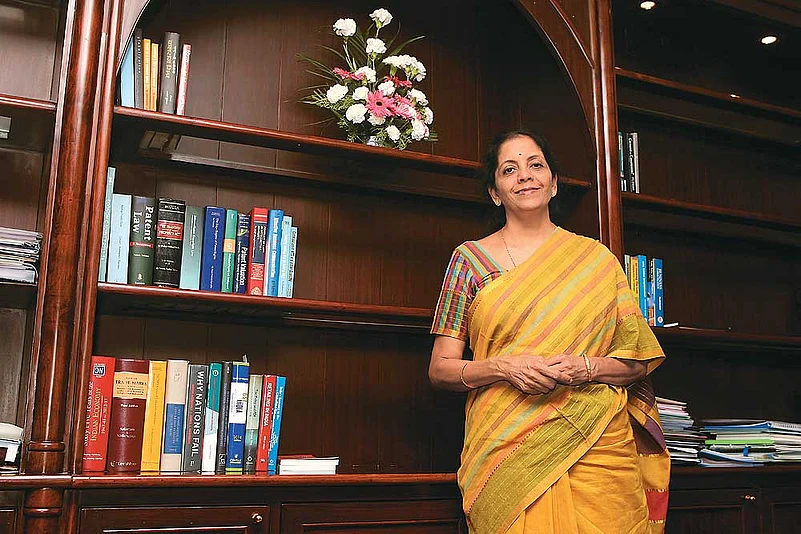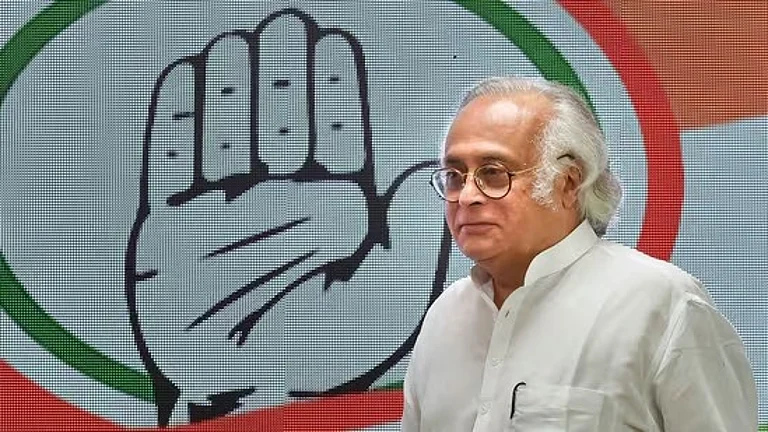The economy appears to be in somewhat better shape now, but that hasn’t diminished expectations from the Narendra Modi government. In an interview with Lola Nayar, Nirmala Sitharaman, Union minister of state for commerce, industry, finance and corporate affairs, outlines the NDA’s roadmap for economic revival. Excerpts:
The tenure of the UPA government was marked by economic scams of all sorts. What are you doing to ensure your government doesn’t go down the same path?
I am not going to even relate to the scandals of the previous government. Our government has come out clearly on how we are taking our decisions and how transparent the whole process is. Oh my God, I wouldn’t even relate to or compare ourselves with them. We are not them. The way we campaigned and said very clearly ‘Congress-mukt Bharat’ itself tells you that the culture which prevailed earlier will not be the culture of this government.
How realistic is the time-frame for pushing growth in the economy?
We have started by allowing up to 49 per cent FDI in railways and defence production. We have made a beginning in sectors where we can produce in India, thanks to a lot of research which is being done. Time-linked approach is not what is critical. The decision to get capital in capital-starved areas is critical.
What is the concept behind ‘Make in India’—import substitution or export-led growth?
It is a combination of both. When you invite a country like China, which already has great market access in India for many of its high- and low-value products, to invest in India, making them produce here is import substitution. But ‘Make in India’ is also about those commodities in which India has an advantage, like pharmaceuticals, generic drugs, biomedicines, biotechnology and automotive products. We have an edge in the products we produce in these sectors, having set the bar for quality very high. Therefore, if we are able to manufacture products that are internationally approved, and we expand their production, then you are actually ‘making in India’ products that already have great market access abroad.
Are we now looking more at value addition within the country?
Yes, because now there is no one product that is completely produced in any one country. Take the example of the mobile phone, which has 99 per cent of its components coming from so many different countries. It is assembled in a particular country and the final product acquires shape in a different country. The global value chain that goes into the making of any one product is indicative of an era where trade is not just in that one commodity or one natural good. It is more value-addition. So if you have some endowment in your country, you are going to be better-off by making value-additions to it so that you can get better value for that commodity.
Is ‘Make in India’ a call for swadeshi—the RSS-promoted ideology?
If you want to look at it in that manner, please go ahead. But ‘Make in India’ as a brand is all part of a plan for economic revival, which is absolutely necessary. So eventually we want to revive the economy by reviving our strengths and making the public and private sector act on them.
The UPA government had set a target of raising the share of the manufacturing sector in GDP to 25 per cent. What is your roadmap?
It has been a while since the target was set, but all this has been waiting for 10 years. Therefore, the emphasis is to see where action can immediately bear good results. We are not setting targets but clearly saying improve the contribution of manufacturing because potential exists there and it has the capability to absorb labour.
Which are the critical areas where you need to take a decision? There has been talk of labour reforms to give manufacturing a push?
There are several things that go with the route that we have taken—improved administration, transparency, labour reforms and consultations with labour unions. Some of the archaic laws will also have to be removed.
Entrepreneurs say setting up a business is a tedious process. What is being done about this?
The finance minister has already announced the shifting of the application process to an e-biz platform. With one click of the mouse you can have 15 ministries virtually looking at your file and clearing applications. That is one way to ease doing business. Similarly, by November or December, visa-on-arrival will be enabled for business at 18-19 Indian airports. Of course, a lot also depends on state governments. We will have to engage with them and work together to make things easier.
There are concerns that in the haste to promote industrial investment, environment, civic and labour issues are being diluted?
We are consciously promoting industries to improve the overall business environment, which will have a positive bearing on everybody concerned with business. This includes labour and those looking to get into the job market. It includes all civic and environment concerns. Cleaning up of Ganga is not just for Ganga but for every water body or for that matter looking at Swachh Bharat means that civic concerns are going to be top priority.
Several corporates are under a cloud. Many like Kingfisher Airlines are facing charges of being wilful defaulters. Do you have a plan to deal with such cases of bad debts?
The court procedures will happen irrespective of what the government does. We will not interfere. But we want greater transparency about banks and in appointment of directors. On NPAs, we have answered several Parliament questions in the first 100 days, on how we will ensure that banks don’t suffer poor debts.
Has the government firmed up its decision on FDI in multi-brand retail and online retail?
No decision has been taken.
What about the status of SEZs? We have over 400 of them, many of them seem just land grabs.
I would stay away from concluding that they are all land grabs. I would be cautious about talking of their failure. Some SEZs have made it well. Around 500-odd were announced, some were notified, some were not. We really need to understand what went wrong. A lot of people have told us that the change in DDT and MAT laws may have acted as a disincentive. Even now, SEZs contribute to some extent to our exports. No SEZ is completely dysfunctional. All of them are being assessed.


























